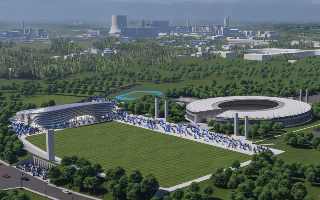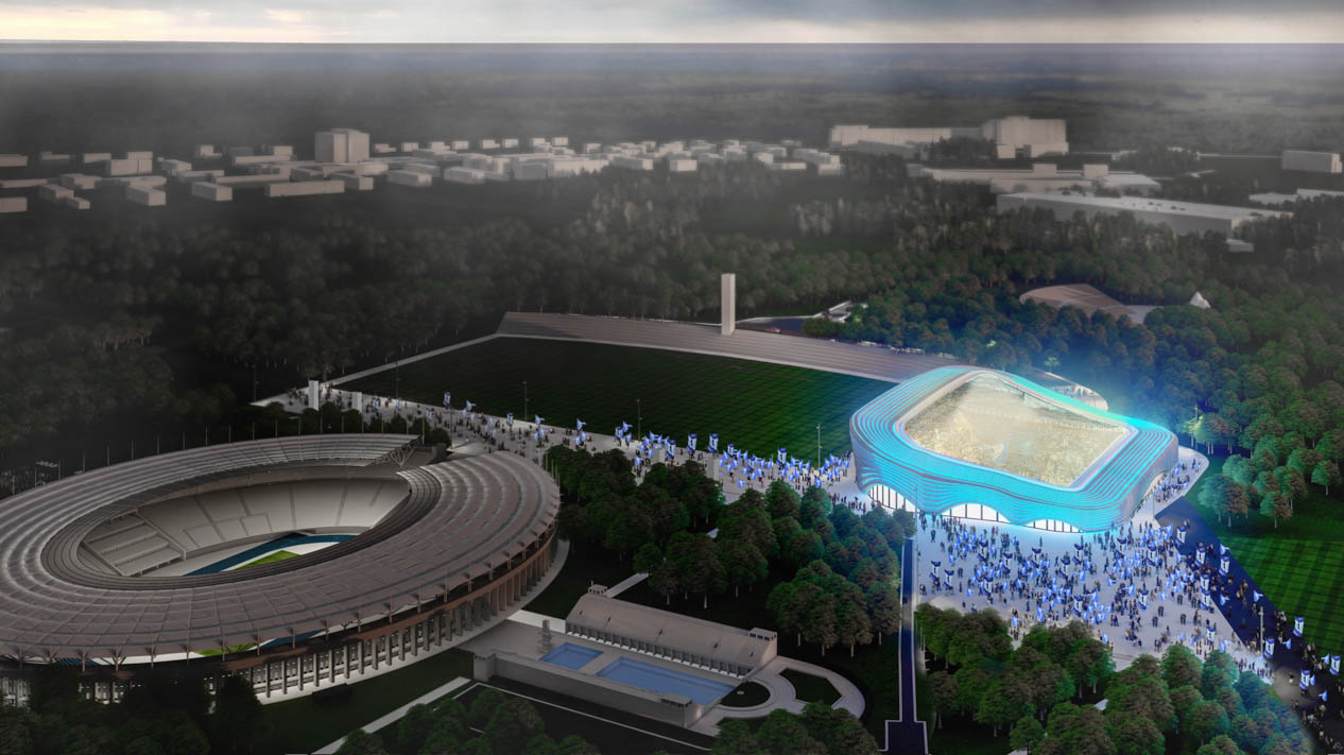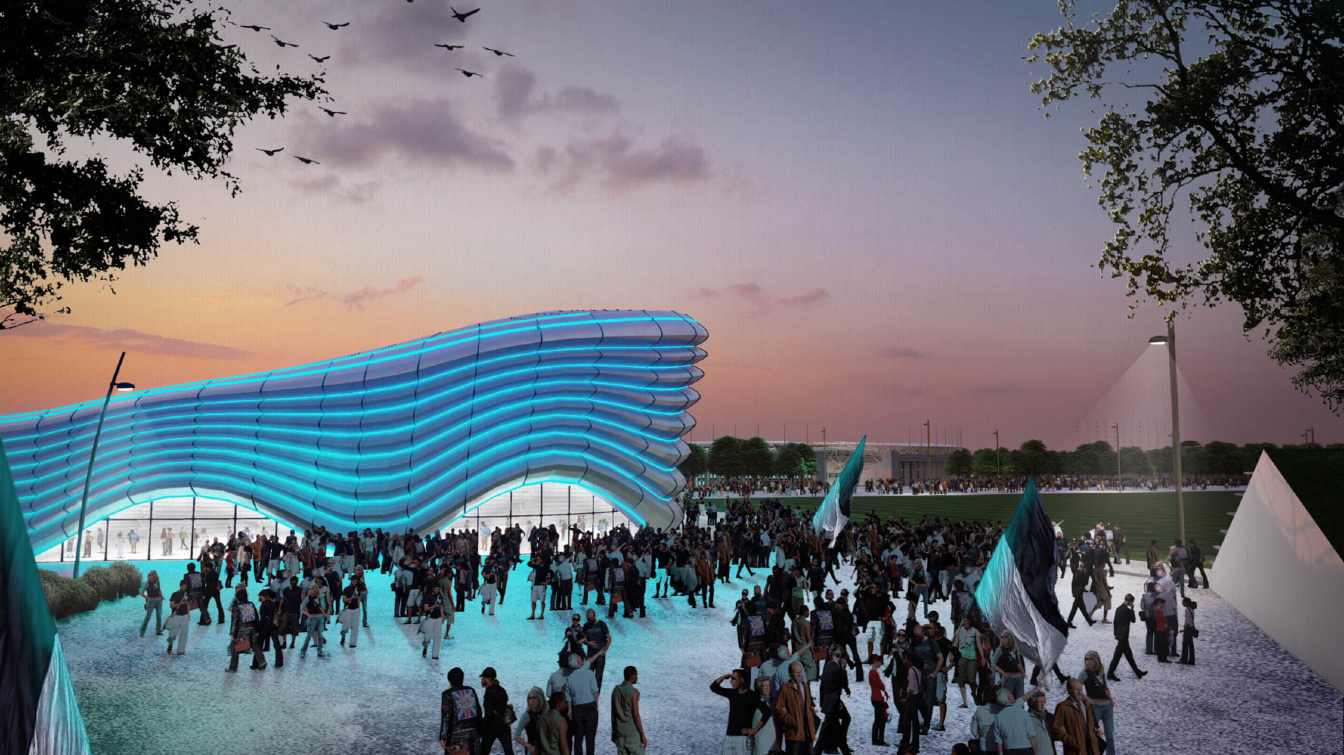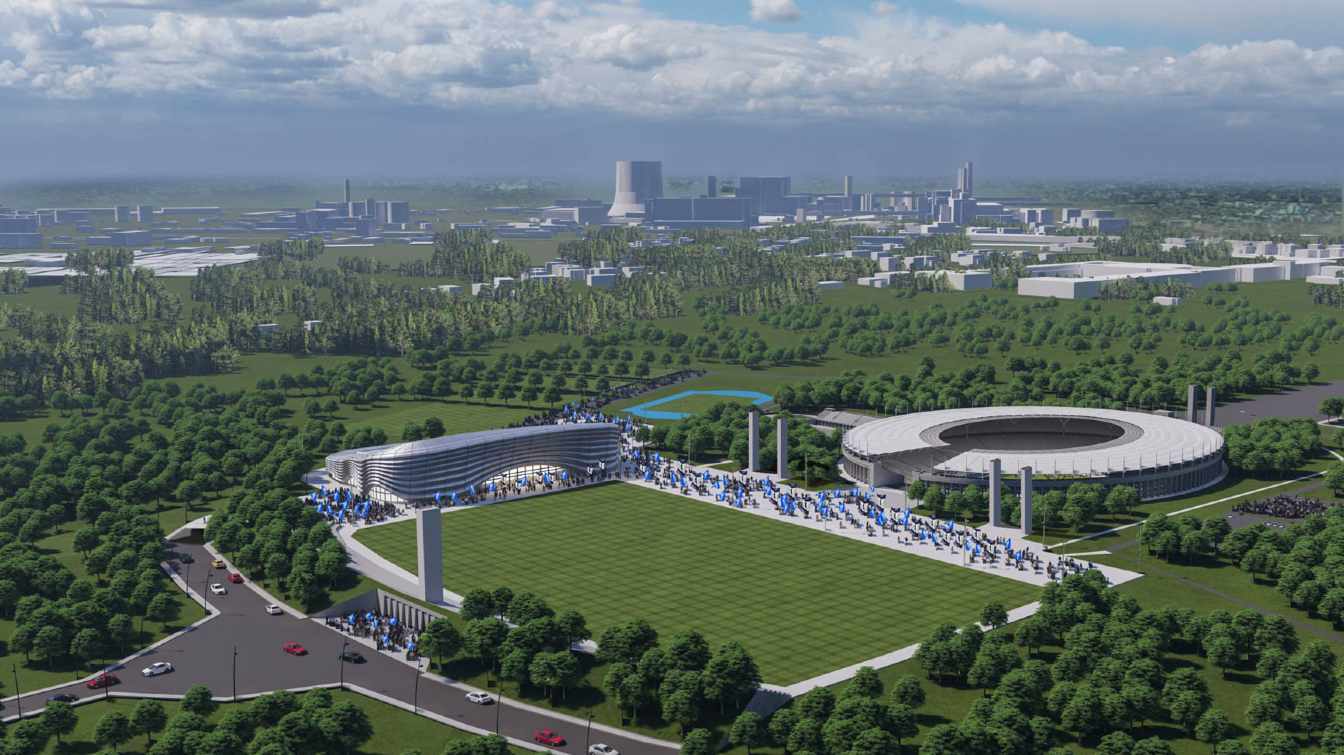Germany: Decision on Hertha Berlin's new stadium location in 2025
source: StadiumDB.com; author: Paulina Skóra
 The decision on whether Hertha BSC will be allowed to build a new stadium in the Olympic Park will not be made before the spring of 2025. A commission of experts appointed by Senator for Sports Iris Spranger (SPD) recently decided that the Lindeneck location, north of Maifeld, is no longer being considered.
The decision on whether Hertha BSC will be allowed to build a new stadium in the Olympic Park will not be made before the spring of 2025. A commission of experts appointed by Senator for Sports Iris Spranger (SPD) recently decided that the Lindeneck location, north of Maifeld, is no longer being considered.
Advertisement
Commission considers proposal to build stadium in a protected historical area
There are good reasons why the commission supports building a new stadium on Jesse-Owens-Allee,
Iris Spranger wrote on X. Nevertheless, the suitability of the location must now be assessed. Furthermore, Hertha BSC has revised its plans: instead of a stadium with a capacity of 45,000 seats, the new one will have 50,000. A decision on whether this plan can be implemented along Jesse-Owens-Allee will not be made for several months.
The expert commission had already favored this location at the beginning of 2024. Spranger emphasized that a smaller impact on the Olympic Park
is necessary, and that environmental protection and transport connections are easier to manage. However, further discussions on the matter appear to be needed.
The riding club at Olympiapark initially opposed the stadium plans – partly because the club's management only learned about it indirectly. In the meantime, close talks are being held with the Senate and Hertha BSC. Communication has been open and transparent,
said Karsten Trefflich and Frank Kühlmann, president and vice president of the Olympiapark riding club.
The Berlin State Monuments Office is also part of the discussion, as the entire Olympic complex is protected as a historical monument. Not only are prominent structures like the Olympic Stadium, the bell tower, and the domed hall listed, but also many other buildings, gates, and monuments. The riding stadium and its grandstand are also included. This protection complicates Hertha's stadium plans, as demolition is not possible. Development plans are not a reason to remove parts of a monument or exclude them from protection
, the State Monuments Office told rbb|24. We assume that the Reiterstadion building will remain,
said Knut Beyer of the Blue-White Stadium Initiative. However, this does not mean that no changes can occur in the Olympic complex.
The tank farm area, located south of Maifeld, was designated for demolition in 2005 by the Senate's Department of Urban Development. The warehouses left behind by the British are in poor condition, and many are no longer in use. The cost of demolition was estimated at approximately €200,000 in 2020. In the Vision 2030
– the overall development plan for the Olympic Park – the area was to be converted for equestrian sports at a cost of €6.4 million.
The plan included renovating the historic riding stadium, dismantling the post-war grandstand, and adding running tracks. However, this never happened. In March 2024, the Senate's Department of Internal Affairs and Sports presented the current status of Vision 2030.
It shows that neither the tank farm area nor the riding stadium will be prioritized in the coming years. The Hertha stadium could theoretically move to the tank farm site, extending close to the historic Reiterstadion buildings.
Stadium must fit the surroundings – how much will it cost?
The design for the new stadium, presented on Hertha BSC’s website, features a glowing blue oval with plenty of glass – stylish, modern, but seemingly expensive at first glance. Whether this can be implemented in the Olympic Park is another matter, not only due to costs. In response to a query from rbb|24, the Berlin State Monuments Office stated that Hertha BSC must adhere to design specifications during construction so as not to disrupt the appearance of the listed area.
Therefore, a stadium design that does not fit into the overall look of the Olympic Park is unlikely to be approved. If the construction of the stadium at Jesse-Owens-Allee is approved, Hertha BSC will face the challenge of financing the new home. The cost of the stadium is not yet clear, but recent examples suggest that a 50,000-seat arena will likely cost several hundred million euros.
Mainz paid €55 million for the Mewa Arena, completed in 2011 with 33,305 seats, along with an additional €15 million for the land and other costs. SC Freiburg spent €76.5 million on the Europa-Park Stadion with a capacity of 34,700, and about €50 million on infrastructure. Meanwhile, the Fritz-Walter-Stadion, with 31,845 seats and completed in 2023, ended up costing over €160 million, instead of the initially estimated €114 million.
Hertha will have to expect higher construction costs not only due to the larger stadium capacity. Although material prices have stabilized, they have not returned to pre-pandemic levels.
The club must find private investors
Since Hertha BSC plans to privately finance the entire stadium, it cannot follow the path taken by many other German clubs. In the case of classic stadium financing, the respective city or state is often involved,
explains Christopher Huth, professor of sports management at the Bundeswehr University in Munich.
Often, football clubs act only as operators of the stadium, while the city remains the owner. Part of the construction costs is covered by subsidies, and repayments depend on the league affiliation to ease the club’s burden. Only a few clubs, such as 1. FC Union Berlin, FC Schalke 04, RB Leipzig, and TSG 1899 Hoffenheim, own both the stadium and the land.
Hertha BSC will only be able to lease the property in the Olympic Park. The state of Berlin has decided not to sell any land. I don't think there will be any exceptions in the Olympic Park,
said Christian Gaebler, Senator for Urban Development, when asked by rbb|24. Hertha BSC must, therefore, find private investors without city support. Given the current financial situation, including that of the club itself, I’m curious how they plan to manage this,
says Christopher Huth. The second division team must repay a €40 million Nordic Bond by November 2025.
The club could also raise part of the funds from its fans. According to Christopher Huth, fans often buy such bonds as collector’s items. They order the bond, which comes printed and framed.
However, such fan contributions are not enough to fund an entire football stadium. We are usually talking about a single-digit million amount,
Huth adds.
Advertisement

 StadiumDB
StadiumDB

